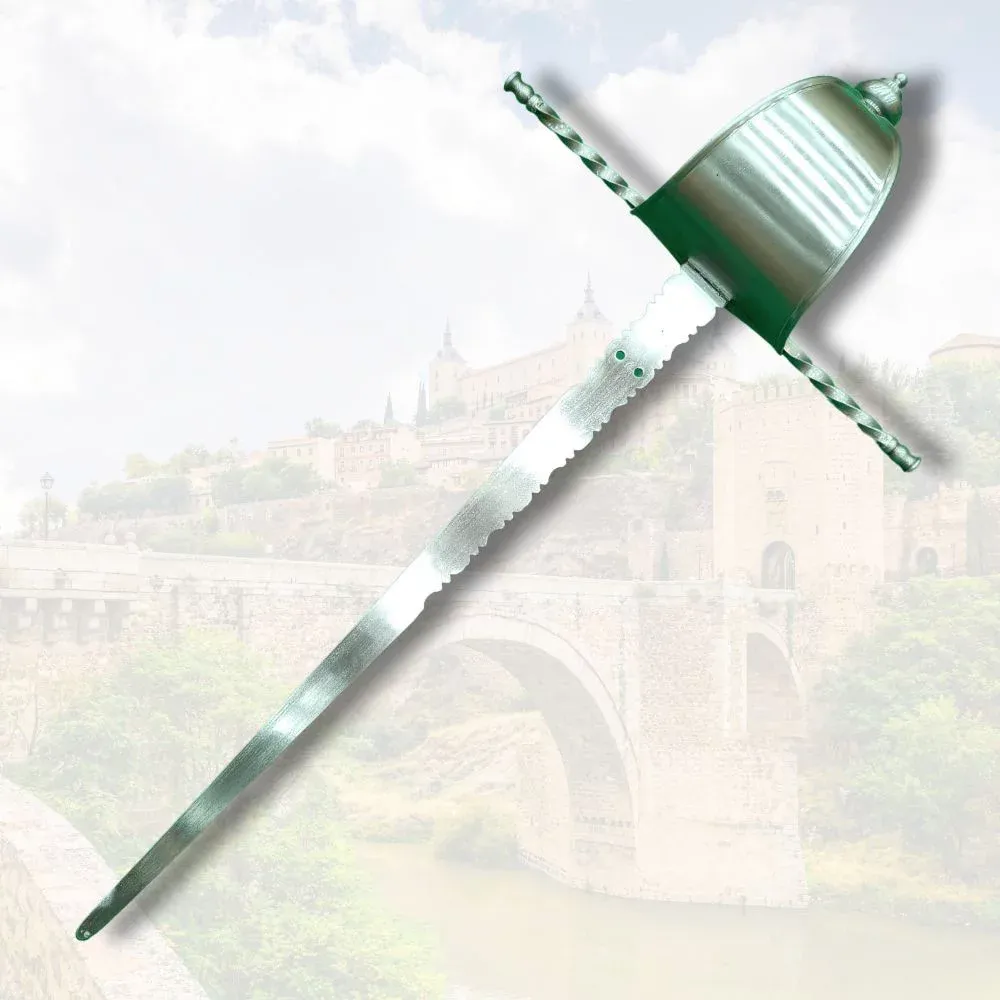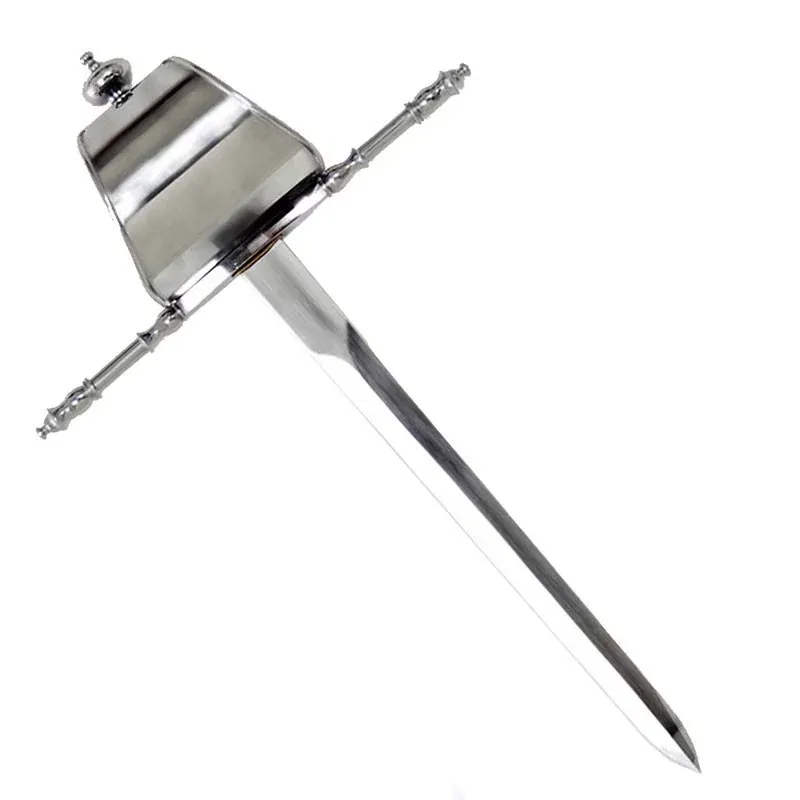What is a Daga de Vela?
Originating in the 17th century, the vela dagger is an iconic variant of the left-hand daggers used in Spanish fencing. Designed to enhance the protection of the hand, this dagger complemented the rapier, characteristic of the renowned close-combat style of that era.
Origin and Description of the Vela Dagger
The evolution of the vela dagger was a response to the desire to maximize the fencer's defense without sacrificing effectiveness. A metal piece was introduced that completely covered the left hand. This innovation allowed the fencer to focus on combat technique without worrying too much about sustaining injuries to the hand. It bears several names, such as misericordia, quitapenas, or daga de caridad, reflecting its broad cultural acceptance and versatility in combat.
Features and Design
- Length: The length of the vela dagger generally ranged from 40 to 60 cm, making it suitable for close combat during the Renaissance.
- Decorative Design: With a distinct baroque style, these daggers exemplified "horror vacui," or fear of empty spaces. They featured intricate engravings on their sails, shells, and leaves, often with plant motifs, mottos in Latin or Spanish, and family names.
- Functionality: Equipped with broad handguards, they were specifically designed to intercept and trap enemy blades, allowing for both cutting and thrusting effectively.

Historical Use in Spanish Fencing
The vela dagger was crucial in Spanish fencing, combining with the rapier and other weapons like the vizcaína to form a formidable combat system. In the military context, especially among soldiers of the Tercios, it was as essential as their richly adorned swords. Soldiers typically carried the dagger at their waist, at kidney height, ready for any unexpected threat.
Cultural Significance
Beyond its martial use, the vela dagger endured as a symbol of status and skill. Its rich decoration and slender design not only reflected the fencer's prowess but also the wealth and social background of the bearer. These weapons were both a means of defense and a cultural emblem of a time of splendor in fencing technique and art.

Conclusions
The vela dagger is a masterpiece of metallurgy and Renaissance fencing. Serving not only as a tool for combat but also as an expression of elaborate ornamentation and advanced technique, it represents an essential part of the history of Spanish fencing. Its sophisticated design and multifaceted functionality keep it as a fascinating subject of study for both historians and enthusiasts of combat techniques.




























